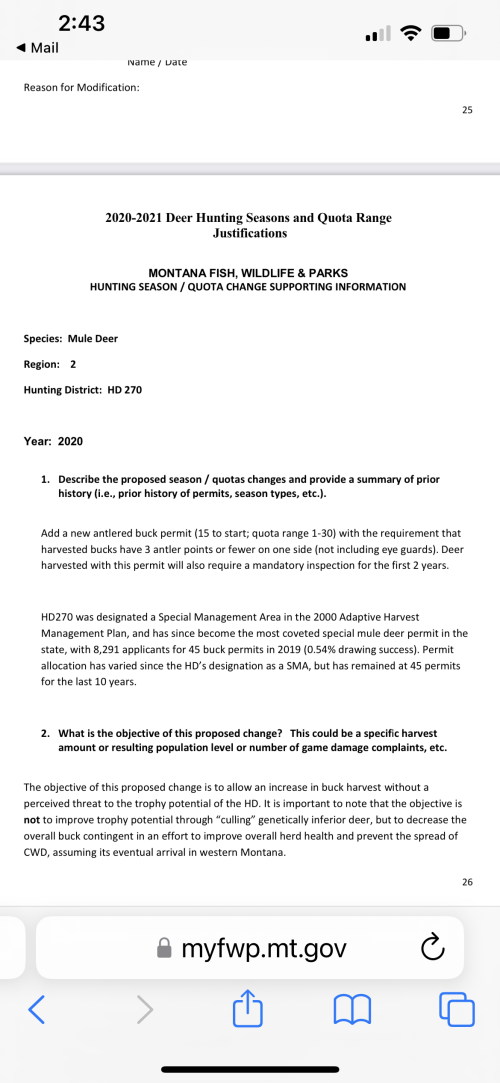shoots-straight
Well-known member
This surprised me as I've read a lot of studies that are "Contra" to this study on one estrus cycle.For those that geek out on this stuff, you might want to check out the Cutting The Distance podcast #42 with Jason Phelps and BYU bio-faculty Brock McMillan. Lots of good data from studies being conducted in the state.
Highlights
- Contra to a familiar belief, all data shows there is only one estrus cycle for elk and deer.
- % of cows that come into estrus each year can vary greatly (61% to 92%) leading to pregnancy variations (56% to 90%)
- 300+ elk births tracked, zero had twins
- No such thing as a "old, dry" cow, but often have calf every other year.
- 10% of antler size for a bull elk is determined by health of the mother while in utero. Another 10% determined by nutrition during antler growth cycle.
- Antler size of bull peaks at 7yrs and is 90% of max by age 6 (mentioned deer was 4-5).
I apologize in advance if I misstated anything, but it was very interesting. I'm not sure how it would differ by region, but it seems pretty general. There was discussion on managing bull/cow ratios and opportunity vs quality, showing how difficult the biologists' jobs are. I need to listen to #40 as it has some discussion on moon phases
I didn't listen to the pod cast but thought I'd throw this out there.
I believe these elk were from the National Bison range in Montana. Wild ones then put in pens for study.





